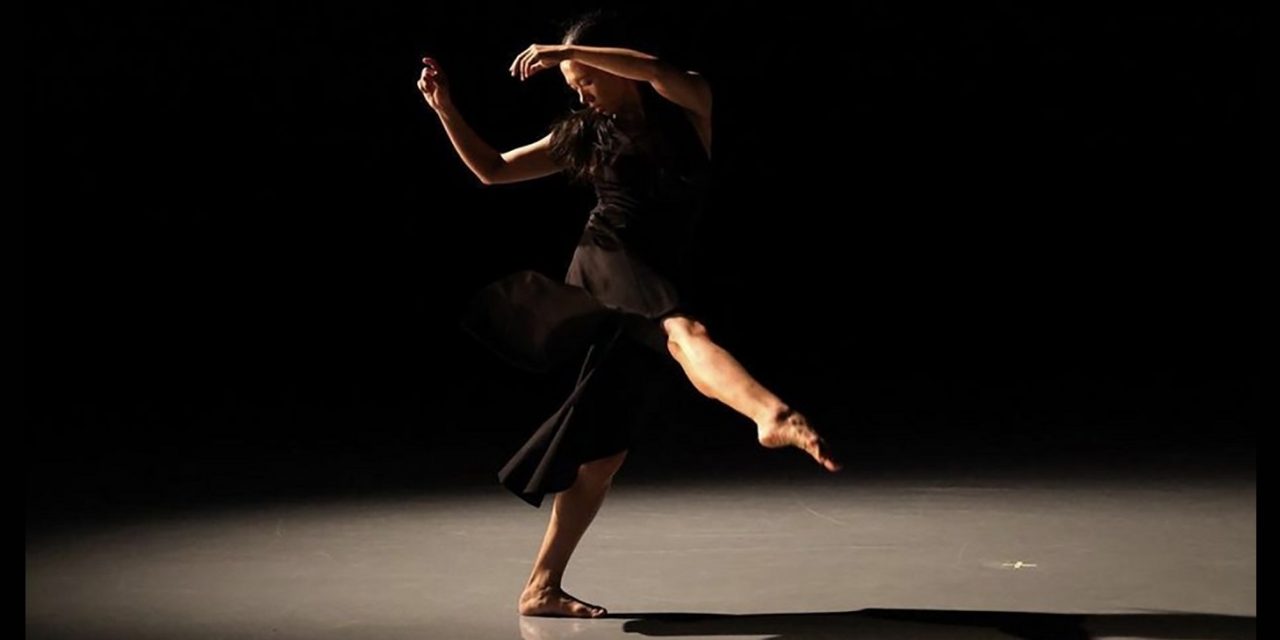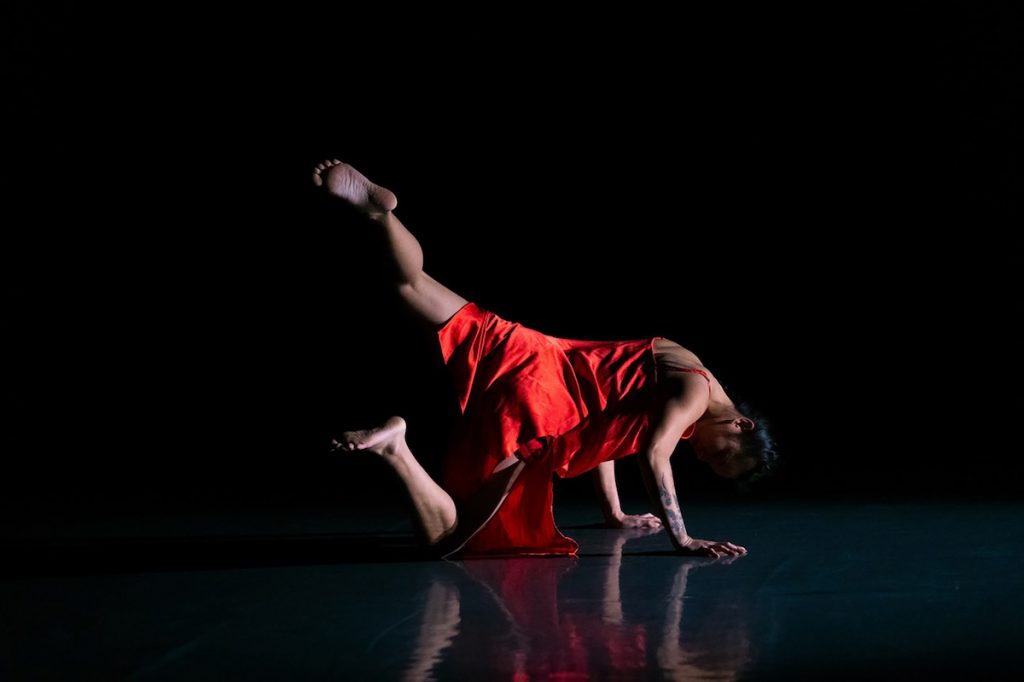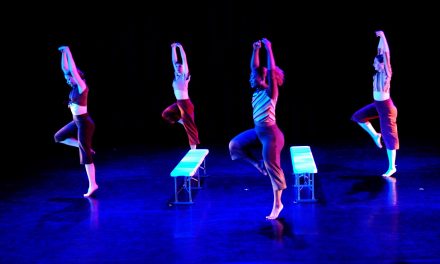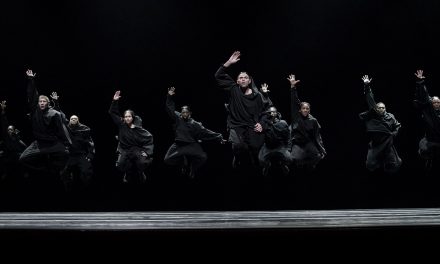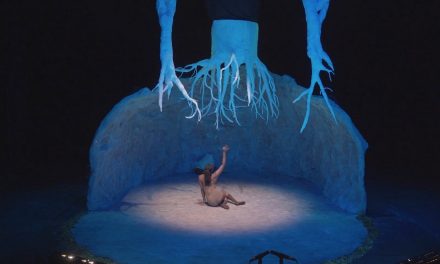For its second weekend, the Odyssey Theatre Ensemble’s Dance at the Odyssey festival presented works by choreographers Assaf Salhov and Roya Carreras. Salhov was raised in Israel and is now based in New York City and Carreras is an Iranian-Hispanic artist who resides in Los Angeles. Their choreographic styles presented at the Odyssey were as opposite as their backgrounds, but the two works shared themes of contemplation, remembrance and perception.
Assaf Salhov’s The Song of Spies appeared as two people, perhaps in a relationship, who were speaking different words to the same song or trying to speak identical words to different music. Both performers, Nikki Holck and Salhov, had a strong stage presence and moved across the floor without making a sound. When Holck clapped her hands the first time, I jumped. The silence was almost spiritual, especially for Salhov whose movement included kneeling with his back to the audience and head lowered.
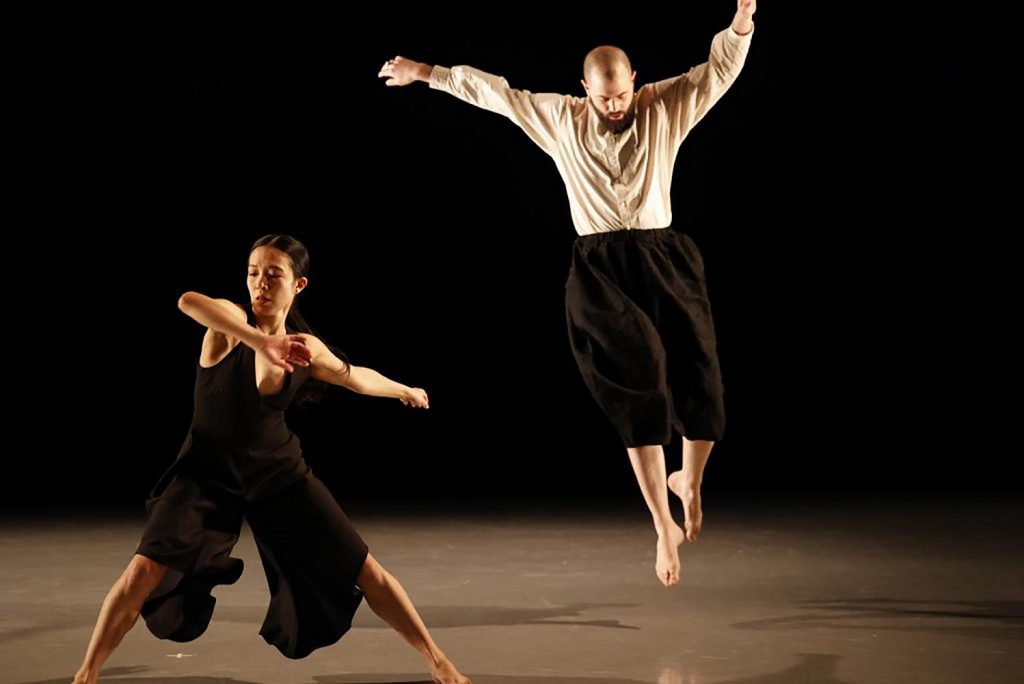
(L-R) Nikki Holck, Assaf Salhov in Salhov’s “Song of Spies” – Photo courtesy of Dance at the Odyssey
At first the two did not touch, but came together as if to waltz, but remained an inch apart; close enough to feel their attraction for one another, but not having it consummated. Throughout the work, their hands were neither tense or totally open, and their movement phrases sometimes were the same, but rarely in sync. Their costumes also reflected this idea; Holck in all black and Salhov in large, bellowed black pants with a white shirt.
The relationship between these two characters was not an easy or fulfilling one, but it was apparently clear that they desired to be as one. Holck would run and jump at Salhov, turning mid-air to end with her back against him, only to be swiftly rejected. Sometimes she would be accepted but only briefly. Each had a solo that reflected internal conflict, but neither displayed emotions to an extreme. Their thoughts were as supple as their movement. The Song of Spies was without climax but never dull or empty. I was completely immersed in the work.
The Music for The Song of Spies included “Puis Qu’en Oubli” by Guillame de Machaut, “Passacalle, La Folie” by Henri La Bailly, “Ulysses’s Gaze” by Kim Kashkashian, “De fortune me doi pleindre et loer” by Guillame de Machaut, “lou, lou, lou” by Misericordia, and “Mass in B Minor – Agnus Dei” by Johan Sebastian Bach.
The Stories We Tell Ourselves consisted of three solos choreographed and directed by Roya Carreras and performed by very strong dancers Joslin Vezeau, Eloise Deluca, and Elise Ritzel Miller. Carreras describes them as movement monologues and so they appeared; stories being told of past, not always pleasant experiences.
Part I was performed by Vezeau to music by Danish composer Kristian Andersen, Iranian singer Googoosh, and Carlos Saura. This tale began quietly on the floor and developed into an often satisfying memory. Costumed in red, Vezeau’s movement was the most spatial of the three and required the most dance technique in that she performed what is now described as contemporary dance. She performed the solo with great passion and precision.
Part II had a darker feel to it and took place primarily on the floor. Deluca’s performance was seamless as she moved in and out of knotted positions on the floor to standing erect. Once standing, she appeared unsure of the choice that she had made. The music was by Lebanese composer Ibrahim Maalouf and Googoosh.
Set to the music by Googoosh and songwriter and instrumentalist Darius Christian, Part III was the weakest choreographically and felt unfinished. This was no fault of the dancer, Miller, who was wonderful as she expressed subtle sexual frustrations moving on the floor in front of a large industrial fan. After leaving the area with the fan, Miller’s performance was even stronger and it spoke to an uncertain acceptance.
Carreras’ structure of tying the three solos together with a dancer from another section appearing briefly as a stagehand or wandering past another as she exited was an attempt to tie the solos together. For the most part this was successful, but what the three women were telling themselves was not always clear in relationship to their reality.
The Lighting Designer for the evening was Mark Haines. No costume credits were listed.
Up next for Dance at the Odyssey is JA Collective (January 27-29), Jessie Lee Thorne’s Poets in Motion (February 3 – 4), Suchi Branfman’s Dancing Through Prison Walls (February 10 – 11), and closing out the festival is DaEun Jung (February 17 – 19).
For more information and to purchase tickets, please visit the Odyssey Theatre Ensemble website.
Written by Jeff Slayton for LA Dance Chronicle.
Featured image: Nikki Holck in The Song of Spies by Assaf Salhov – Photo courtesy of Dance at the Odyssey

